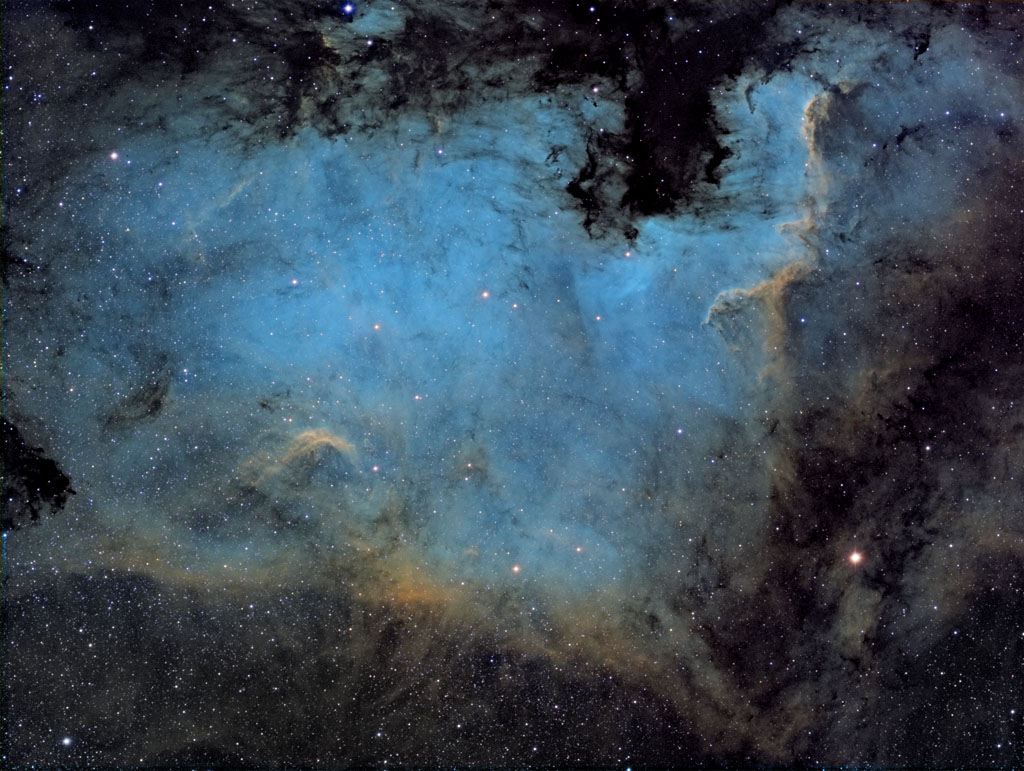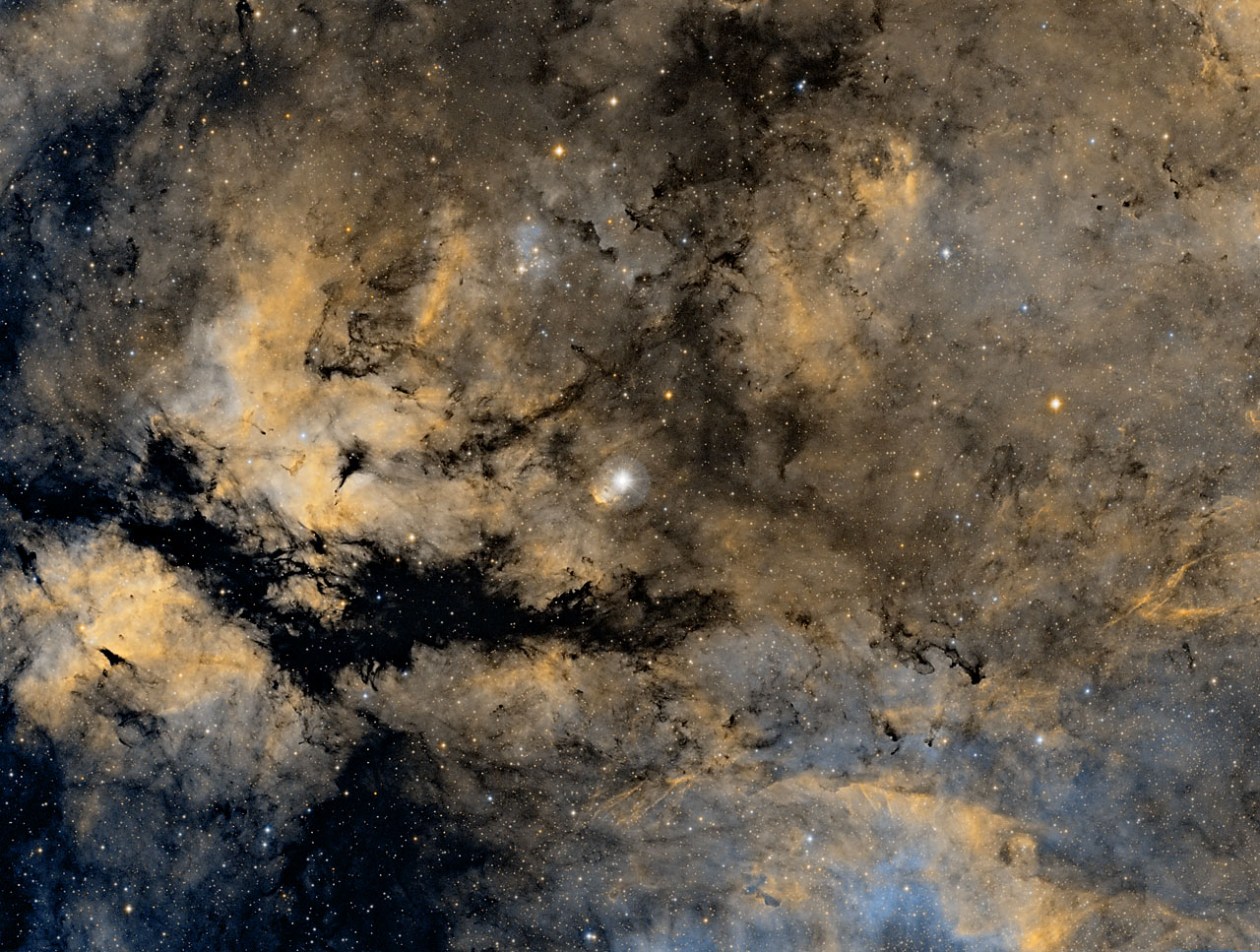Here are a couple of new images from the constellation Cygnus, the swan. Both are fairly wide views (done with the WO Star71 telescope) and both are narrowband images with somewhat unusual color rendering. First is the North America Nebula, NGC7000:
I have to explain that you may be seeing something like the shape of the United States here, with the dark “hole” being the Great Lakes region, rather than the shape of North America. But if you turn it clockwise 90 degrees the hole becomes the Gulf of Mexico and the entire continent is included.
NGC7000 is one of many large areas of gas and dust in Cygnus, this one being just under Deneb, the star that marks the tail of the swan. And just outside this field of view (above it in the orientation shown here) is the Pelican Nebula.
The distance from Earth to NGC7000 is uncertain, as is the identity of the star or stars whose energy is ionizing the molecular cloud. If Deneb is that source, it puts the distance at about 1,800 light-years.
The next star in the body of the swan is Sadr, which is where the wings extend from the body. This second image is IC1318, with Sadr right in the middle:
IC1318 actually has 3 parts to it, one of which is not included in this image. The 2 that are shown are the brighter regions on the left that are separated by a dark lane. This pair is sometimes called the “Butterfly Nebula”, with the bright nebulosity as the butterfly wings and the dark lane as the body.
The word “sadr” derives from the Arabic for “chest”. It is a very large star, a supergiant in the system used for classifying stars, and 150 times the diameter of our Sun. While Deneb is 2 to 3 times brighter, Sadr is still one of the brighter stars in our night sky and is easily visible under moderately dark skies.
I captured both of these images recently, taking advantage of some clear skies and working around a Moon that rose around 1 to 2AM. The WO Star71 is a good scope to use when conditions are less than ideal: It’s low magnification avoids most issues with atmospheric turbulence and the fast focal ratio of 4.9 captures photons pretty quickly. Each of these images consists of 6 to 8 hours of exposure over a total of 4 nights.
The “different colors” come about from the need to cast H-alpha and S-II channels as distinct colors, when they are really both red. But the arbitrary choice of color schemes is also influenced by my desire to not be too boring. In natural color these, and most nebulae, would just appear as red.

